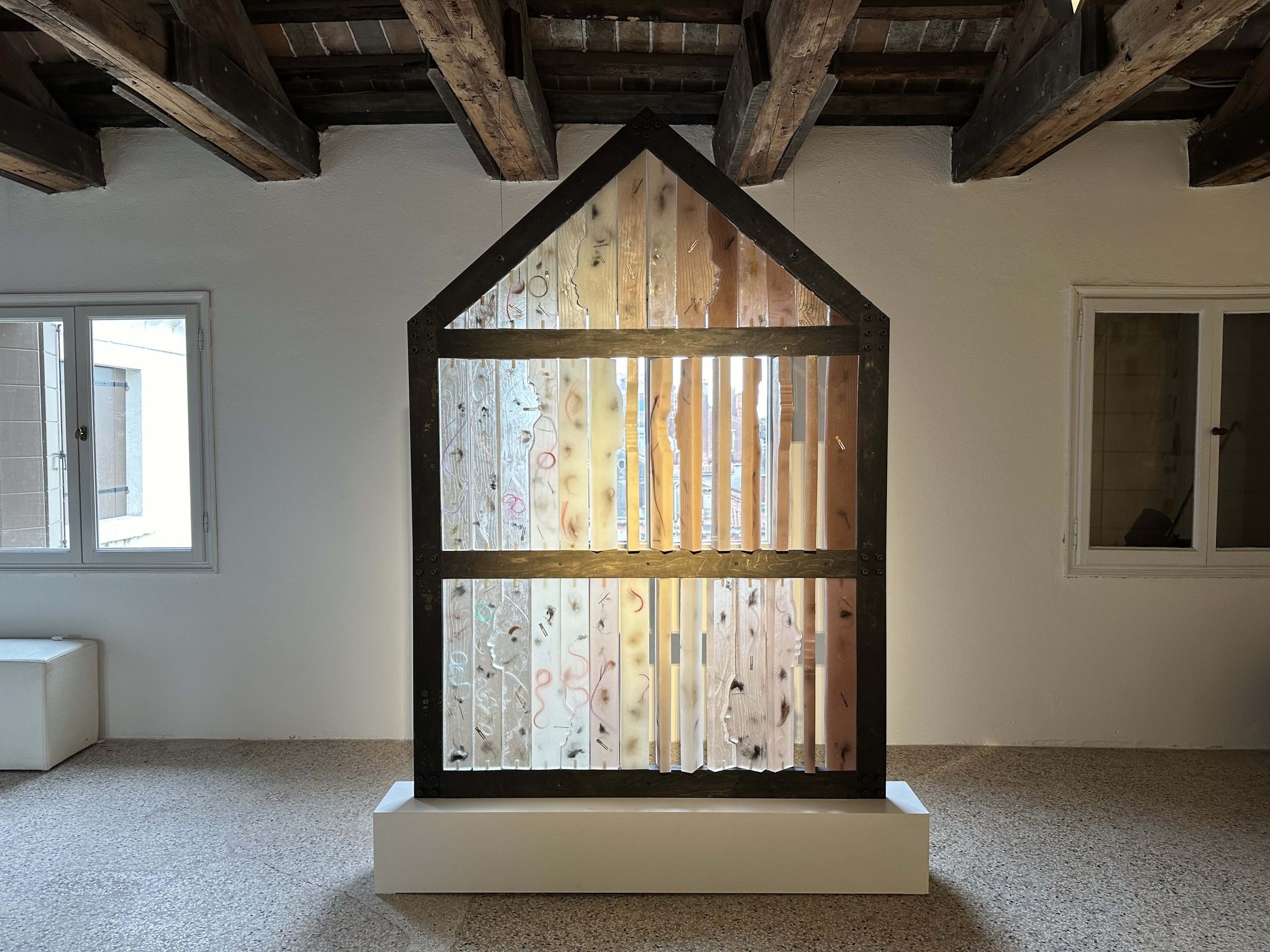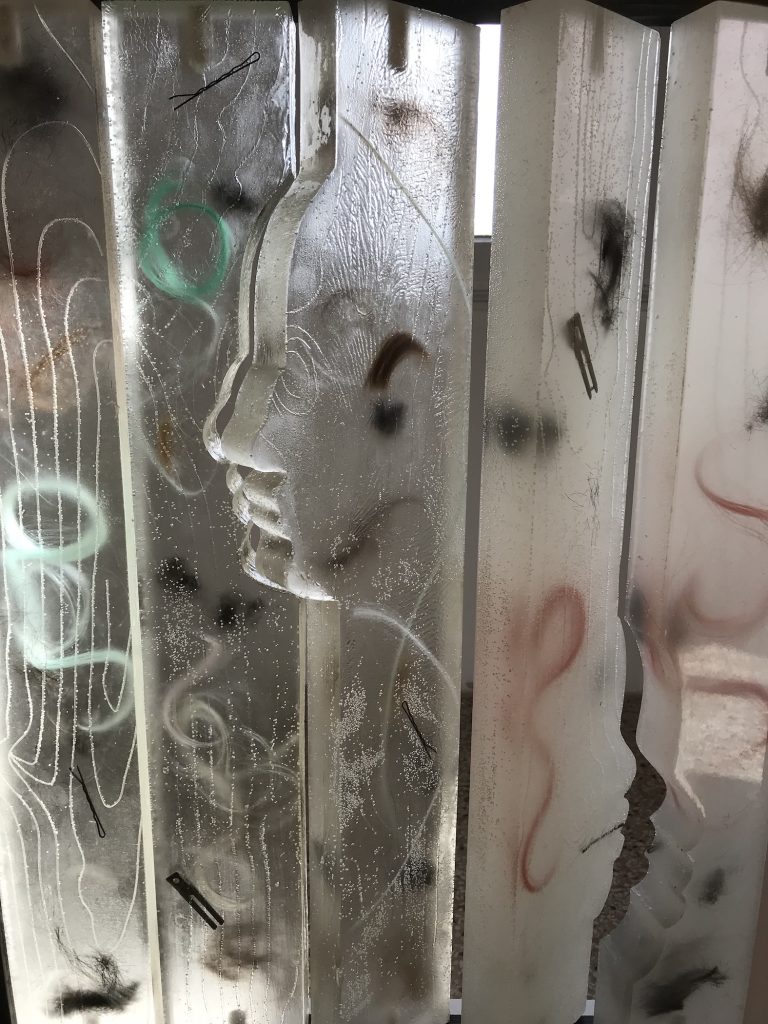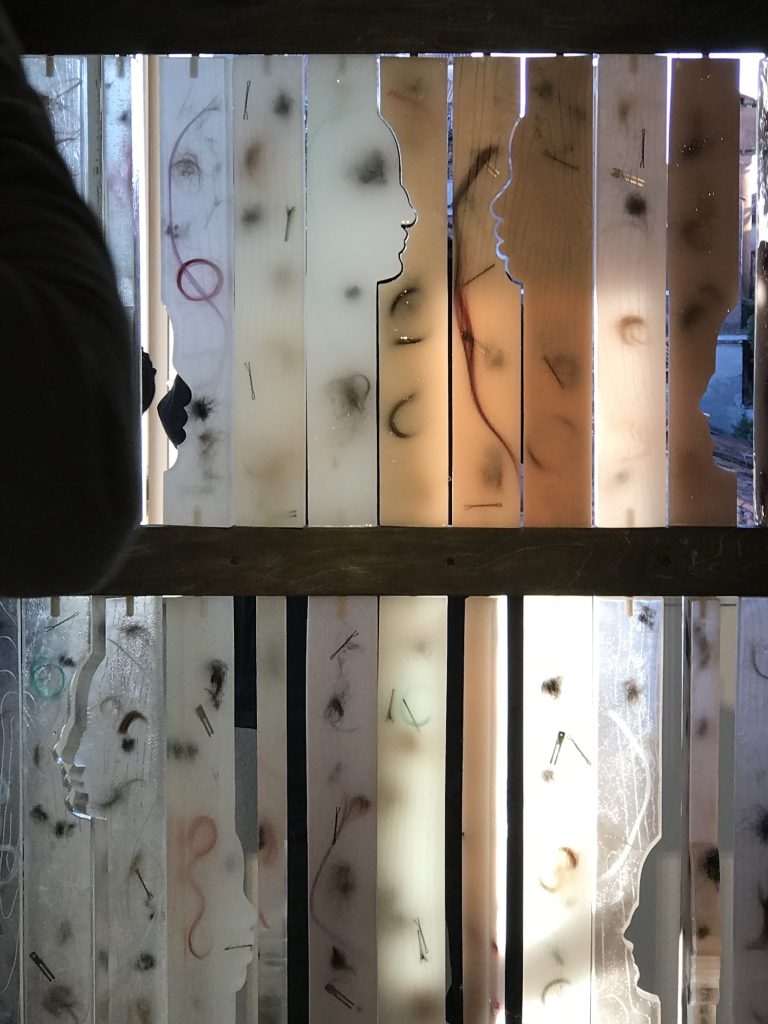
Nina Freedman, Faculty Member in the School of Constructed Environments at Parsons, Exhibits at the Venice Biennale
The Venice Biennale has been presented since 1895, and is the original art festival that all other biennales are modeled after. The world’s most prestigious arts organizations and forward-thinking artists have exhibited there, where millions of arts enthusiasts gather each time it is presented.
This year, the Biennale includes an installation from Nina Freedman, a faculty member in the School of Constructed Environments at Parsons, whose work spans architectural design, interior design, installations, teaching, and furniture design. Her installation, titled “FACE-ADE: THE HUMAN LANDSCAPE,” opened at the European Cultural Council Art Biennale, and will be on view until November 7, 2024 at the Palazzo Mora.
“Being at the festival, I was honored and humbled to be in the company of so much amazing work,” shares Freedman. “Things happen with one’s work that are often unexpected. FACE-ADE is about who lives behind the walls of our neighborhoods. Sited inside a palazzo in Venice, in front of a window, when the components of the installation are rotated, one can see the rooftops of the neighborhoods of Venice through the installation. It was perfect.”
Working in architecture for years has given Freedman the ability to view her public art installations through a particular spatial lens, and her current practice thematically explores the idea of “belonging” through the scaled layers of domestic and universal “Homes” – Home to Self, Home with Family, Home to Community, Home in Nation and Home with Earth.
“A key focus is the investigation of domestic “thresholds” with transformative possibilities, dissolving emotional, social, cultural and intergenerational boundaries,” she explains. “This installation, “FACE-ADE: THE HUMAN LANDSCAPE” transforms the threshold of an iconic home facade from an opaque wall into a translucent wall section “skin.” It explores the question of how domestic architectural symbols engage dialogue about belonging.
An operable wall, “FACE-ADE” features a home with a first floor, second floor and attic. The installation blurs the line between architecture and art, where pigmented and transparent bio-resin wall studs, contoured with human profiles, rotate in a wood structure. The piece invites the daily cycle of the sun, and simultaneously functions as exterior cladding when closed.


Furthermore, the installation is embedded with repurposed, diverse hair waste from individuals of all genders, ages, and ethnicities, sourced from New York City neighborhood hair salons. This creates a shared identity, and highlights a spatial symbol of tolerance and transparency. Hair in the installation consists of varied curly and straight, short and long, natural and dyed, healthy, fake and damaged. Using the intimate and regenerative layer of hair, it additionally invokes the facade we show in public, exposing the vulnerable, versatile costume of beauty. How do we reflect on the natural, manufactured or imperfect? Do we expose or hide authenticity, and the visibility of open conversation?
“The installation encourages viewers to contemplate concealed narratives and identities behind the facades in our neighborhoods,” shares Freedman. “Who are our neighbors? It gradually becomes more transparent, symbolizing a gradual revelation of these lives. By standing on both sides of the installation, seen through hair embedded components, it will seem as if visitors are wearing the hair of others. FACE-ADE is about thresholds, borders, home and the neighborhoods we live in. How do we see ourselves in others? How do we, in our differences, live together?”
As a faculty member at Parsons, Freedman aims to help her students use their work in order to shine a compassionate lens on issues they care about and believe in, or are part of their personal experience.
“Universal issues they explore open the aperture to the truth of a closer, more personal experience,” says Freedman. “Depending on a topic of the studio, often there is a question about home and belonging. While a “home” might seem like a microcosm of experience, it is the seed of a wider metaphorical narrative which touches all spheres of life.”
In addition to her work at the Biennale, Freedman recently designed “Conversations,” a jewelry collection of miniaturized bio-resin components in different sizes. She is also at work on an outdoor installation with an organization that finds transitional housing for women and children, a few furniture collection, and a memoir that explores themes related to irreverence and respect.
“FACE-ADE” is generously supported by the New York State Council of the Arts (NYSCA), Pratt Institute School of Design, Pratt Institute Department of Interior Design and The New School. Freedman is currently seeking future venues to showcase the “FACE-ADE” installation, and welcomes members of the New School community to reach out with any ideas!